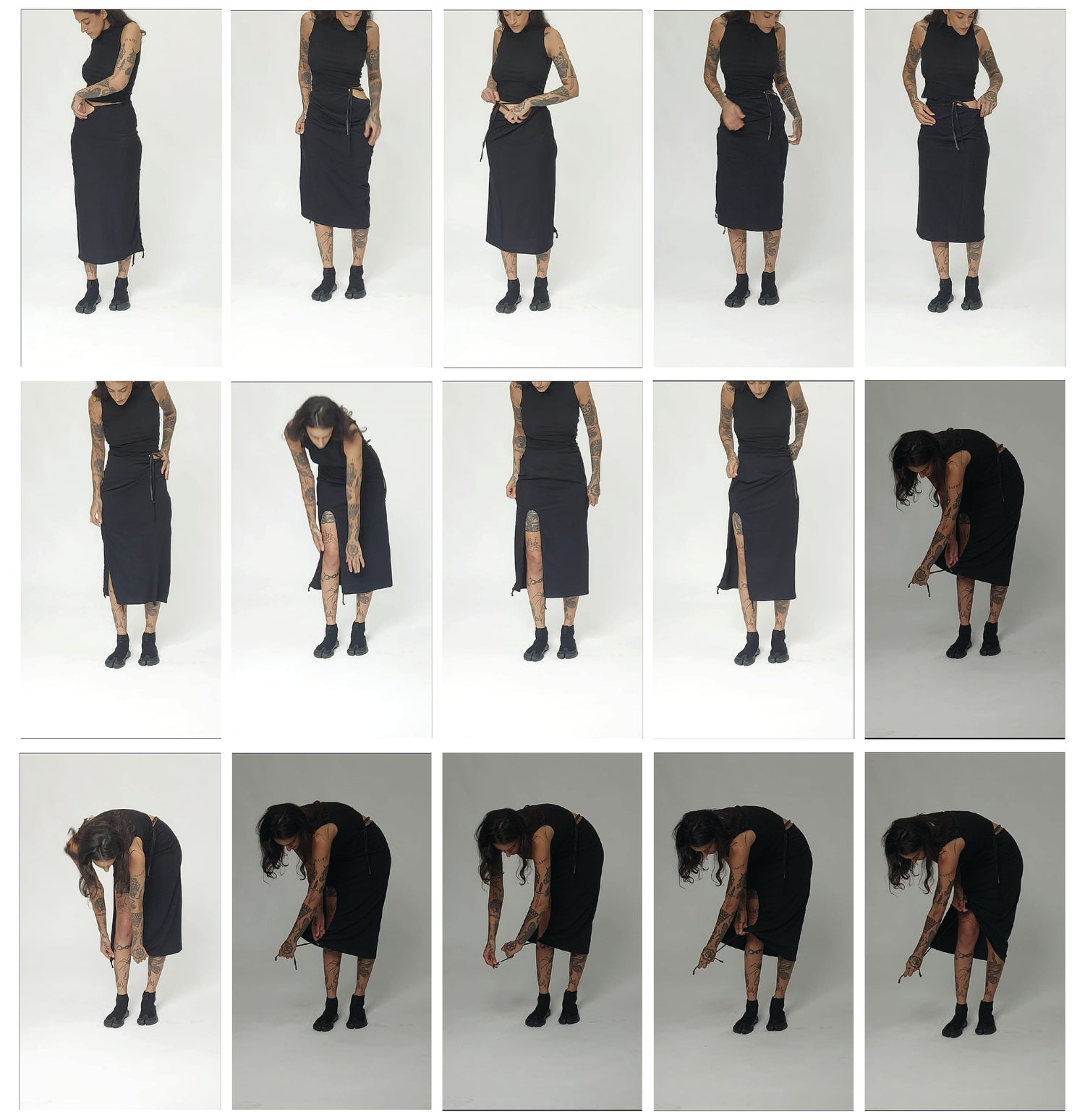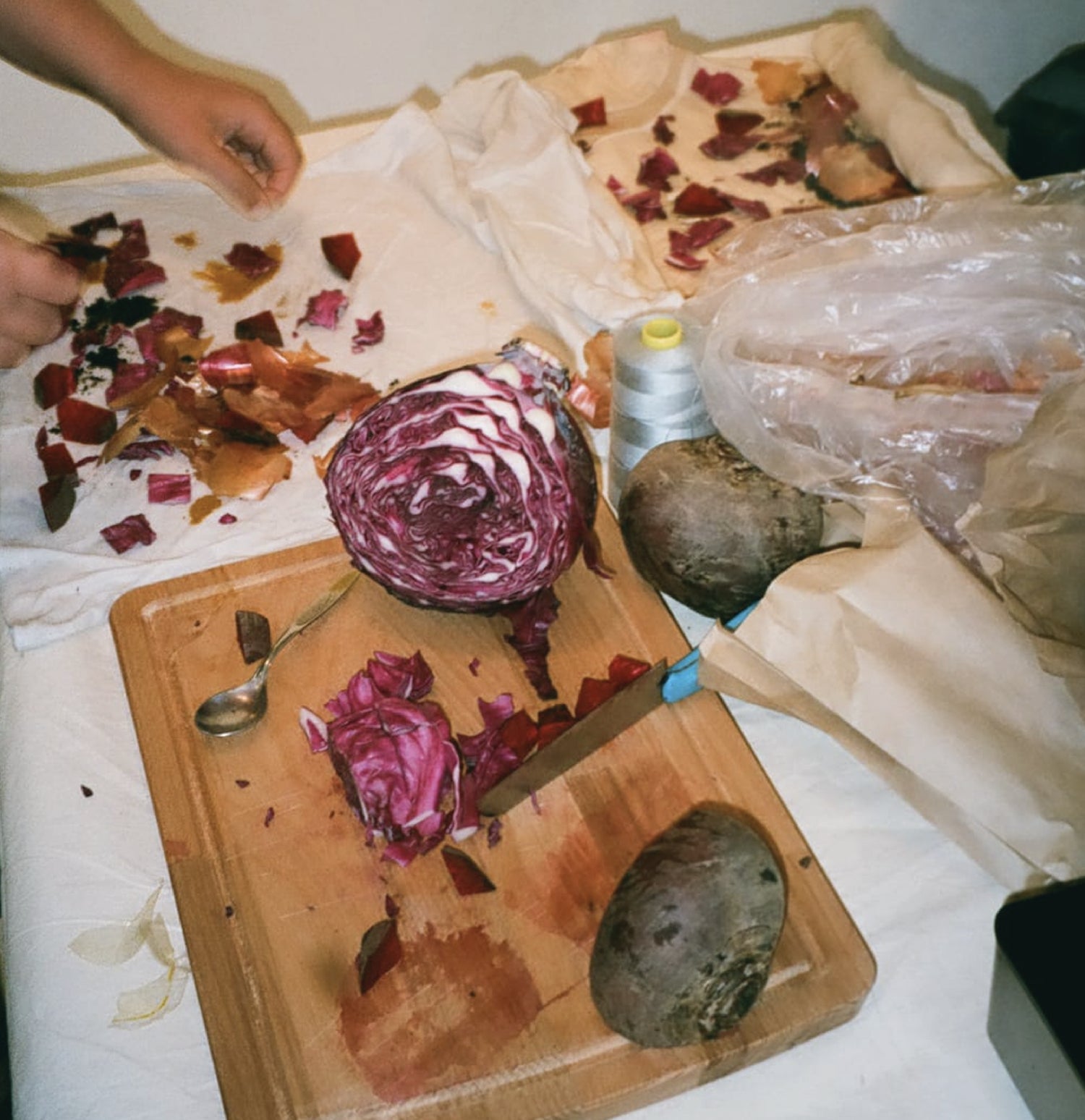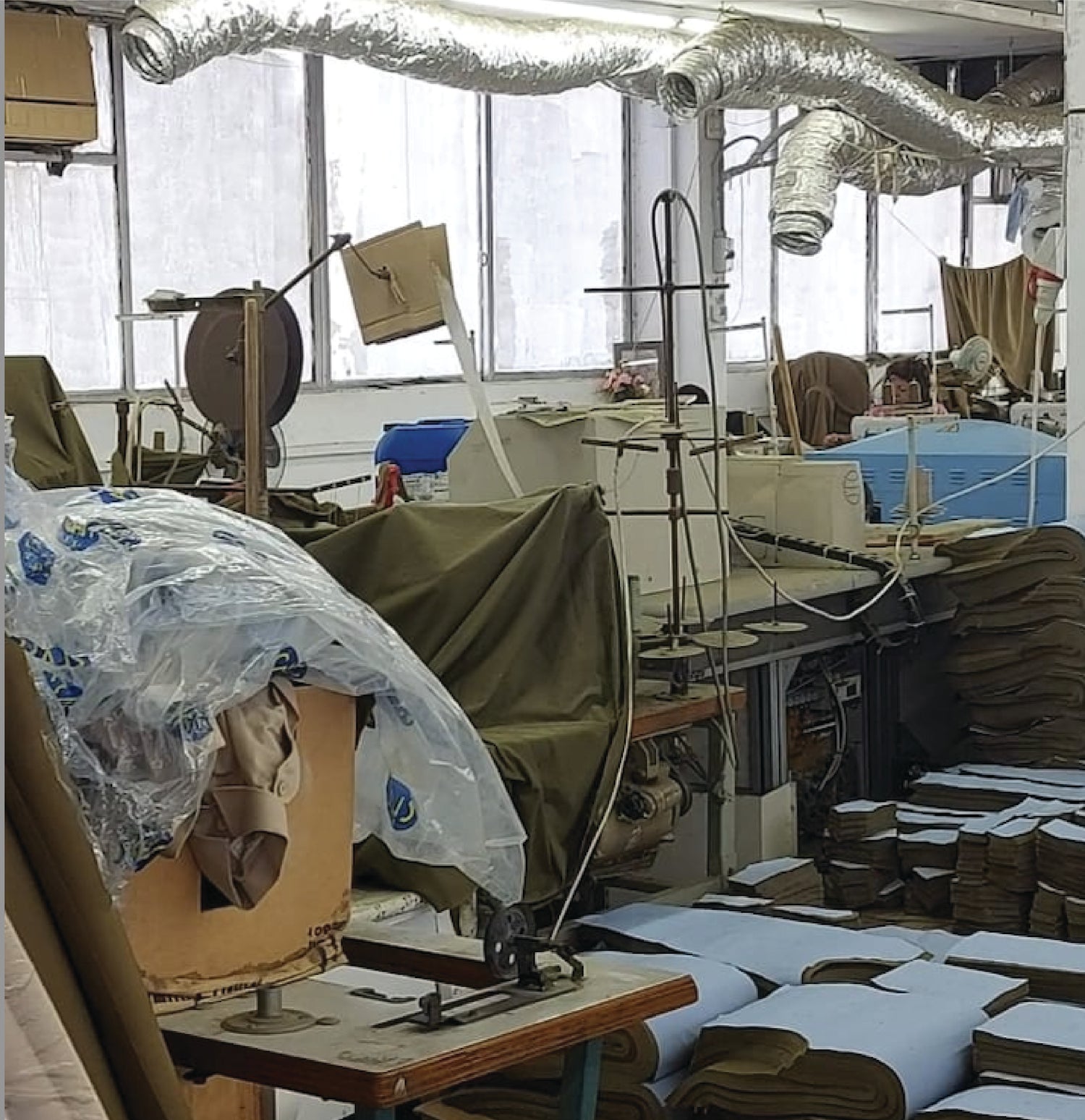Our process

we believe in creating clothes with longevity.
we want each of our garments to feel special and personalized to each of our customers. that is why we design our garments to be worn imaginatively - with the option of creating cut-outs, wearing garments inside-out, or turning the garment around the body to reveal new silhouettes.

when we make, we try to first look at what is around us.
the materials we use to dye with, come from our urban surroundings - from old cabbages and onion skins from the local grocer, to used coffee grounds from the local coffee shop, and local flowers and leaves we come across.

our textiles come from two main sources:
1) local factories - we source factory off cuts, which we then either recreate a roll of fabric from, or patchwork surfaces from which we cut our garments.
2) second hand - either taken from discarded clothes found on the street, or sourced from second hand sorting facilities.
